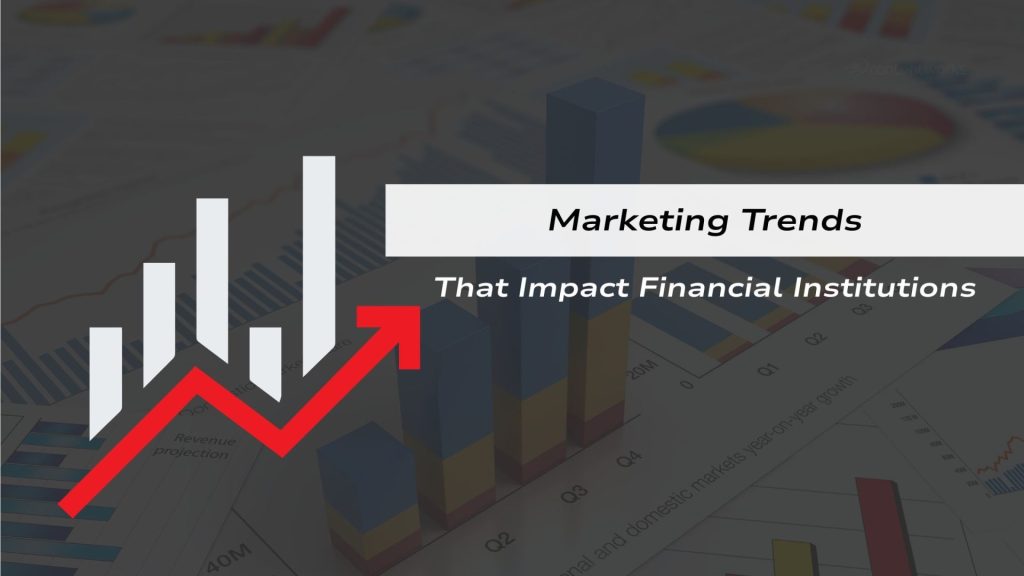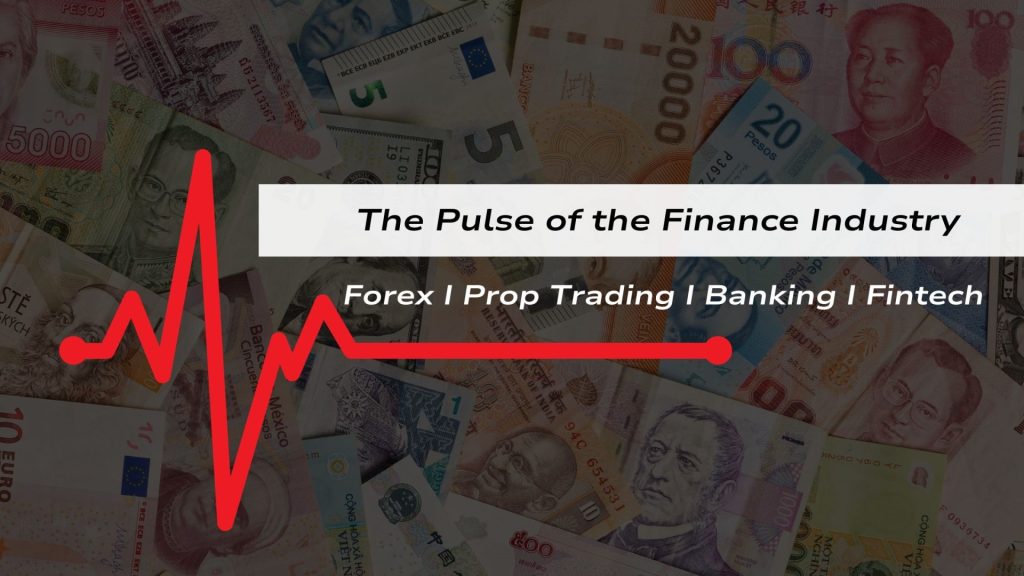The final quarter of the year has historically been a volatile one, with holiday season trading, investors rebalancing their portfolios and traders locking in profits. As we step into this all-important quarter, let’s look back at Q3. With events like Trump’s updated tariff schedules, tightening labour markets and inflationary fears, financial institutions prepared their armour to support traders for market consolidation during Q3. That didn’t happen. Market sentiment surprisingly remained in the “Greed” zone and global financial markets hit several record highs. As Q4 unfolds, will these trends sustain, or will the quarter bring fresh surprises? Our quarterly finance trends report outlines the latest industry developments and previews upcoming events that could influence sentiment and strategy.
Finance Industry News
Forex Industry News: AI Grabs the Limelight
Forex trading activity grew in August. Average daily trading volumes rose 8.4% year-on-year to $2.37 trillion in the month, says CLS Group, a global settlement infrastructure company.
AI remained in the spotlight in Q3. Nearly a dozen AI-powered trading assistants were launches by small and large players. For instance, financial software provider Devexperts launched new features on Devexa that provide traders highly personalised insights and analysis, with claims of increasing trader engagement and retention. Crypto exchange and Web3 company BingX reported that its AI-powered trading assistant surpassed 2 million users and processed 20 million queries in just 100 days of launch.
AI is undoubtedly reshaping how traders analyse markets and execute strategies. After all, studies conducted by Tickeron, a marketplace for AI-driven trading tools, showed that AI bots could generate as much as 362% annualised returns. No surprise then that the global market for AI in trading is expected to expand at a 13.3% CAGR from an estimated $24.53 billion in 2025 to $40.47 billion by 2029.
To regulate AI or leverage it?
- UK’s FCA said it has no plans to issue extra regulations for AI. The regulator trusts its existing frameworks to work as well in AI-powered trading as they do in manual formats.
- The US SEC is leveraging AI to identify rules and regulations that could be trimmed, as part of President Donald Trump’s efforts to limit financial regulators. The initiative could reduce the authority of the Financial Industry Regulatory Authority (FINRA).
Prop Trading Grows in Popularity
As many as 90% of the top 20 prop trading firms witnessed a rise in Google search interest in August. Organic visibility was the key traffic driver for Funded Next and FTMO, with 727,000 and 697,000 visitors, respectively, in the month. FTMO topped AI search visibility (GEO/AEO) and direct search interest (people looking for the company name). Apex and Topstep remained the most popular prop trading firms in the US, while FTMO had the most traction in the UK.
Nearly 40% of traffic to prop firms originated in India, a region that generated between 20% to 30% of prop trading revenues. Funded Next, Maven, and Alpha Capital were the most popular prop firms in India.
Social media platforms, such as Instagram, X (previously Twitter), YouTube, and TikTok, continued to be significantly leveraged by the leading prop trading firms to attract new clients.
Fintech and Banking News
The Federal Reserve cut its benchmark interest rates by 25bps to 4%-4.25% in mid-September. Markets hope for two more before the year closes. Although rate cuts negatively impact bank earnings, the S&P 500 Banks Index continued its upward trajectory. The index is up almost 26% year to date amid expectations of the rate cuts supporting US economic growth.
Fintech stocks DLocal, Affirm Holdings, and SoFi Technologies remained high performers, beating the market with wide margins.
Financial institutions can expect the regulatory oversight to remain stringent as global penalties surged by a whopping 417% in H1 2025. These encompass violations related to anti-money laundering (AML), know your customer (KYC), sanctions, suspicious activity reports (SARs), and transaction monitoring.
- US fintech giant FIS inked an agreement to acquire digital banking and lending SaaS platform Amount.
- Nine major European financial institutions, ING, UniCredit, and Danske Bank, joined hands to launch a euro-denominated stablecoin, which aims to contribute to “Europe’s strategic autonomy in payments.”
- zerohash raised $104 million in Series D-2 funding round, which was led by Interactive Brokers.
- Revolut opened a new global headquarters in London, with plans for a $13 billion investment in the UK. The company also announced plans to enter the Indian market to meet its target of hitting 100 million customers globally.
- Walmart-backed payments provider targeting India, PhonePe, filed papers for an IPO in mid-2026, targeting to raise $1.5 billion.
- Qatar emerged as the MENA region’s fintech hub, with funding surging 581% over the past 12 months and fintech industry revenue projected to grow 500% to reach $1.5 trillion by 2030.
- Grupo Santander’s 100% digital bank, Openbank, launched a cryptocurrency trading service in Germany, with plans to expand to Spain.
Marketing Trends Affecting Financial Institutions

Financial institutions must use innovative approaches to engage their customers and stand out in the competitive market. Some of the trends to rule marketing discussions in Q4 are:
#1 Connecting with Audiences via Live Sessions
From live streaming to live social media interactions, financial institutions are increasingly adopting real-time communication. These provide you with the opportunity to put a human face to the brand and forge genuine connections. You can choose almost anything for a live session, from product demos and Q&As to educational workshops and webinars. To stand out, use these platforms to portray your brand’s personality.
Zopamoney’s Instagram page, for instance, promotes the brand’s “biscuit” bank account as a sweet treat. It uses all sorts of baking-related metaphors to make the content more “digestible.”
Pro tip: Switch finance-heavy jargon for relatable memes and become a part of the culture of your target group.
#2 Voice Search Optimisations
As of January 2025, nearly 3 in 10 people use voice search. From quick fact-checking to searching for purchases, voice search is fast becoming the new normal. So much so that Google plans to launch its real-time search assistant that uses voice command and the camera of your device to help with searches. Heading into Q4, make sure your marketing strategy considers voice-based SEO. This also improves your brand’s accessibility for those with special needs, such as limited motor control or visual impairment. Appearing in voice searches requires certain tweaks to your marketing content. For instance, using FAQ-based content with direct questions and answers works great.
Pro tip: Use conversational phrases to optimise your content and push it up the voice search rankings.
#3 Affiliate and Finfluencer Marketing
From retail giants to start-ups, the B2C segment uses this technique extensively to slip into the feeds of potential customers. While this isn’t anything new, it will be a focus area for marketing in Q4 and beyond. This is because creators have an impact where billboards don’t. Younger cohorts, especially, seek advice from finfluencers. Finfluencers can subtly weave offerings into their content, showcasing them as integral parts of their daily lives rather than as unattainable luxuries. Creator and influencer marketing has already become a core marketing technique for Mastercard. Smaller finfluencer accounts provide you the opportunity to target specific audiences and connect with them through their favourite social media personalities. Tracking and attribution models, through promo codes, allow you to measure the ROI and better align your marketing spends with actual results.
Pro tip: Ensure that all content posted by finfluencers and affiliates is audited by your team and their approach remains compliant with the industry’s strict standards.
#4 Get into the Holiday Spirit
Q4 is all about the holiday season and we’re not talking Jet2 soundtracks! This is the prime time for brokers and fintech firms to boost engagement starts right from October. The key is to shift the focus to being emotionally resonant. Here are some ways to tweak your marketing for the holidays:
- Use the Thanksgiving Playbook
The Thanksgiving period is the busiest shopping season in the US. Stocks of retail and tech giants and the major US indices tend to be volatile on Black Friday and Cyber Monday. It’s a great time to educate clients about capitalising on these swings, with stringent risk management. Try reels and articles on topics like “Your 4-Day Trading Strategy to Navigating Thanksgiving.” Offering a trading bonus and splashing it across social media can increase engagement.
- Focus on Financial Planning & Budgeting
The holidays are a time of significant spending and, often, financial stress. Your content should offer genuine solutions. Create blog or video series on topics like “The Ultimate Holiday Budgeting Guide,” “5 Smart Ways to Prepare for the Santa Claus Rally,” or “The Annual Portfolio Review Checklist: 10 Steps to Evaluate Your 2025 Performance.” Interactive quizzes also work great.
- Leverage the Gift-Giving Theme
Position your product or service as a tool for smart, thoughtful gifting or financial well-being. Create fun, engaging content that subtly promotes your product/brand. For instance, you could publish a blog post on “Top 5 Gifts for the Trader in Your Life (Including a Trading Education Course!).” How about a social media campaign like a festive “Trading Setup Wishlist Giveaway” where a small prize (like a trading journal or monitor stand) is given away to boost engagement.
- Tap into Emotional Connection & Nostalgia
Financial content doesn’t have to be dry. Use the festive spirit to connect with your audience on a personal level and build trust. Use TikTok and Insta Reels for light-hearted, relatable videos that show common holiday financial scenarios and how your fintech app (budgeting tool or expense tracker) solves them. “Behind-the-Scenes” content, such as festive office photos, videos of your team’s favourite holiday traditions are a great way to humanise the brand.
Pro tip: Since market activity is low, customers have time to learn new features of your platform and trading skills. Release short video tutorials like “5 Hidden Features of our Mobile App You Can Master During the Holidays,” focusing on tools like backtesting, watchlists, or advanced charting features. Run a challenge, such as “The 5-Day Demo Account Challenge” over the New Year’s week, incentivising clients to practice a new strategy in a safe environment.
Major Geopolitical Events in Q4 2025

#1 Czech Legislative Elections – October 3–4, 2025
- What’s happening: Voters in the Czech Republic head to the polls for parliamentary elections.
- Why it matters: Outcomes could shift EU policy stances on migration, impact regional unity and fiscal alignment, and support for Ukraine against Russia.
#2 Israel–Hamas Conflict Anniversary – October 7, 2025
- What’s happening: Anniversary of the Israel-Hamas conflict.
- Why it matters: Symbolic dates often trigger heightened tensions, military flare-ups, and energy market volatility.
#3 IMF & World Bank Annual Meetings – October 13–18, 2025
- What’s happening: Finance ministers and central bankers gather in Washington, DC.
- Why it matters: Potential announcements on debt relief, global development finance, and climate funding, with ripple effects in EM debt markets.
#4 Argentina General Election – October 26, 2025
- What’s happening: Argentines go to the polls in a pivotal general election.
- Why it matters: Policy direction on debt negotiations, FX controls, and commodity exports (soy, lithium) could shift dramatically as Peronism resurfaces.
#5 ASEAN 47th Summit – – October 26-28, 2025
- What’s happening: Members of ASEAN (Association of Southeast Asian Nations) will meet in Malaysia this year to discuss promoting economic cooperation amid heightened global geoeconomic uncertainties. Although not a member, India has been invited to the Summit.
- Why it matters: Strengthening trade ties in the region to reduce the impact of Trump’s tariffs could impact the US dollar dominance.
#6 APEC CEO Summit – October 27-November 1, 2025
- What’s happening: Hosted by in South Korea, the summit of corporate leaders and senior officials from the 21 member economies will discuss digital transformation, artificial intelligence, energy transition, and healthcare.
- Why it matters: Attempts to lower tariffs and simplify regulations could strengthen the resilience of the Asia-Pacific region.
#7 Venezuela Parliamentary Election – November 2, 2025
- What’s happening: Venezuela holds parliamentary elections.
- Why it matters: Outcomes could shape oil policy and investor sentiment.
#8 UN Climate Change Conference – November 10-21
- What’s happening: This marks the 10th anniversary of the Paris Agreement.
- Why it matters: The decisions made will impact energy companies, EV makers and more.
#9 G20 Summit – November 22–23, 2025
- What’s happening: Leaders of the G20 convene in Johannesburg, South Africa.
- Why it matters: This year’s focus is on the Energy Transitions Working Group (ETWG). The outcomes of the summit may shift EM policy coordination across the Global South.
#10 Egypt Parliamentary Election – December 1, 2025
- What’s happening: Egyptians elect members of parliament.
- Why it matters: Results will determine how Cairo balances IMF reform conditions with domestic economic pressures.
Q4 Volatility Watch: What Brokers & Banks Should Do
Preparing your traders with the necessary education and tools to navigate the markets is crucial:
- Deliver Insights to Navigate Policy Shocks
Beijing’s AI Plus strategy and the Stargate AI hub project aim to reduce reliance on Western technology. This could intensify US-China tensions over chips and digital sovereignty, weighing on Asian tech stocks and semiconductor supply chains.
- Prepare for Seasonal Swings in Commodity Markets
India’s festive and wedding season typically drives physical gold demand in Q4, raising prices that are already supported by safe-haven purchases amid geopolitical risks. Brokers can highlight gold-linked ETFs and hedges to increase trading activity.
- Offer Event-Specific Insights
Insights into how various outcome scenarios of major geopolitical events can shape the markets. Offering real-time alerts can increase trader engagement.
- Strengthen Client Education
Educate traders about exposure to other regions to explore more opportunities. Publish historical data explaining the impact of macro trends and different assets. Improve customer support to ensure that traders get the necessary help when required.
- Leverage Analytics to Improve Visibility
Use analytics to strengthen your content strategy. Whether your goal is driving organic traffic or getting clicks from advertisements, creating compelling copies with the audience’s intent is key to enhancing engagement and conversions.
Regulatory Spotlight: Stay Updated

Some regulations for financial institutions to look out for in Q4 are:
- The SEC plans to evaluate the efficacy of the Consolidated Audit Trail.
- FinCEN may finalise BOI reporting requirements to exempt domestic reporting companies and U.S. persons.
- FRB, FDIC, OCC, CFPB, SEC, CFTC, NCUA, and FHFA are scheduled to jointly release data standards by December 2025 under the Financial Data Transparency Act.
- EU’s Financial Data Access (FiDA) to issue regulations on the region’s financial data ecosystem, eliminating access for BigTech groups.
- Bank of England (BoE) is pushing financial services regulators to employ AI to discover misconduct and early signs of potential problems, and may propose regulation.
- BoE’s Prudential Regulation Authority (PRA) may exclude up to 37 individual reporting templates, lowering compliance workload for banks and financial institutions.
Globally, regulators will likely push for greater transparency and accountability in AI and machine learning models used in finance, with new guidelines and rules emerging.
At Contentworks Agency, we combine real-time market awareness, regulatory fluency and creative marketing expertise to deliver finance content that performs. Book a free Zoom with our team for expert financial marketing.
Sources
We used the following sources to produce the finance trends report:
- https://www.cls-group.com/news/cls-fx-trading-activity-august-2025/
- https://tickeron.com/blogs/ai-bots-redefine-algorithmic-trading-through-machine-learning-11474/
- financemagnates.com
- leaprate.com
- fca.org.uk/news
- cysec.gov.cy
- https://asic.gov.au
- thinkwithgoogle.com
- bloomberg.com/politics
- reuters.com/world
- economist.com

